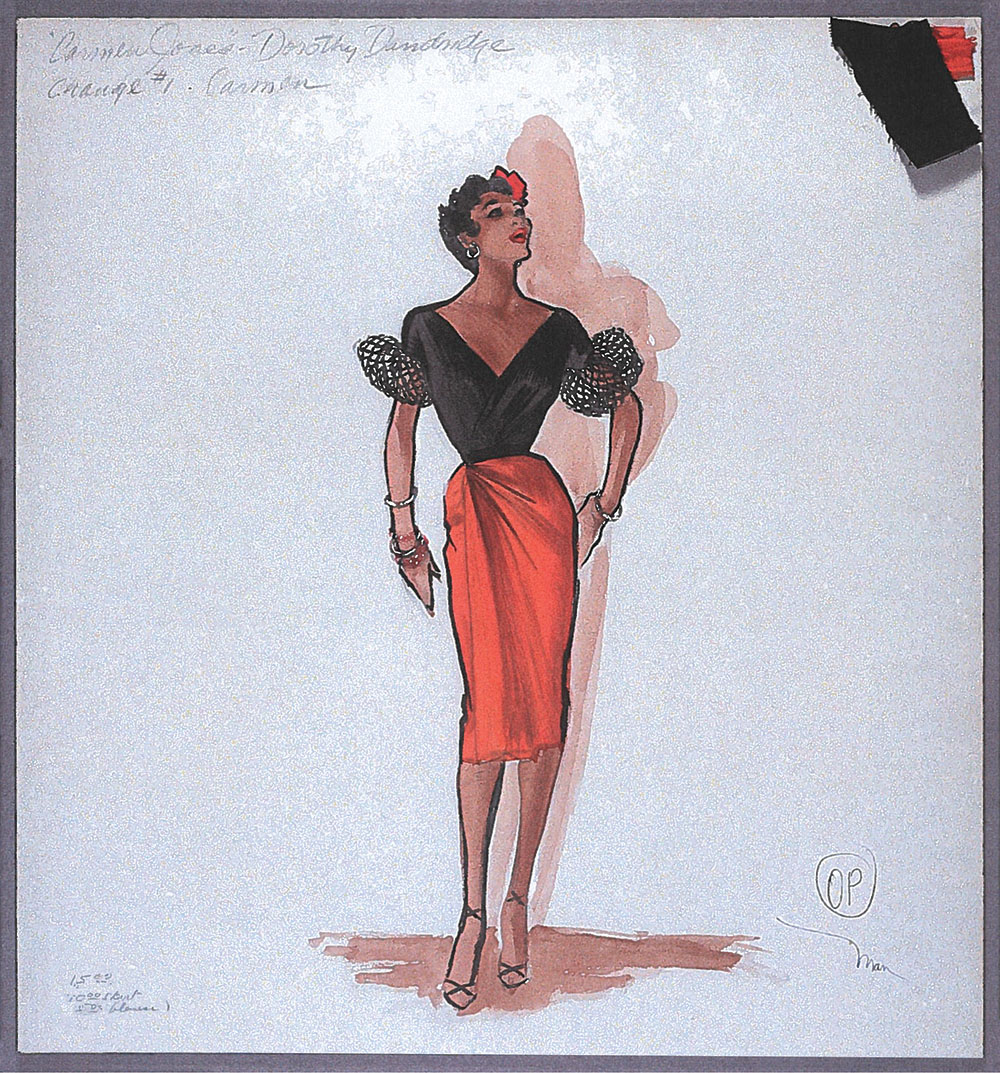
Regeneration: Black Cinema 1898-1971, the Academy Museum of Motion Pictures’ second major temporary exhibition, opening Aug. 21, is a nuanced exploration of the ways in which Black filmmakers and performers have impacted, defined and expanded American movies. The exhibition (which was five years in the making) takes a comprehensive look at film history and Black visual culture more broadly, highlighting notable items like original costumes worn by Lena Horne in Stormy Weather (1943) and Sammy Davis Jr. in Porgy and Bess (1959), tap dance shoes from the Nicholas Brothers and one of Louis Armstrong’s trumpets.
The beginning of the show, 1898, marks the creation of “the first known moving image footage of African American performers onscreen, [seen] in a dignified way,” says Doris Berger, co-curator and vp curatorial affairs at the Academy Museum. The show concludes with material from 1971, the dawn of the Blaxploitation subgenre, acknowledging the shift that took place when Black cinematic arts became available to — and embraced by — the wider public.
“We’re looking at independent films as well as Hollywood, and we’re looking in front of the camera as well as behind the camera,” says Rhea Combs, co-curator and director of curatorial affairs at the Smithsonian’s National Portrait Gallery. She adds that the exhibit is anchored “with four thinkers: Sojourner Truth, Booker T. Washington, Frederick Douglass and W.E.B. Du Bois, [and looks at] the ways in which these 19th-century scholars understood the power of imagery and representation, and how that baton was passed on to independent filmmakers in the teens, ’20s and ’30s to take this charge forward.”
According to Combs, the ways in which African American images have historically been represented has informed the entire show, which features photographs, scripts, posters, drawings, newsreels, and more.
The show offers sociopolitical context for early, experimental works like “race films,” which were independently made productions in the 1910s to the ’40s, designed for Black audiences and featuring all-Black casts. And the “Stars and Icons” gallery, with more than 50 glamour portraits on view, honors Black performers who were household names as well as those who never quite crossed over to the mainstream. “Even within the Hollywood film industry, there were so many people who had roles that have been uncredited all along,” says Berger.
“We recognize that Blackness is not a monolith. So there is this idea of really understanding that there were ecosystems of creative people that were feeding off of one another,” says Combs. “And this idea of regeneration is one that I think we not only found inspiration through a literal ‘race film’ title with that name but also this idea of creativity fueling other creative opportunities. That is another reason why we incorporate visual art with film art — to make sure that we are recognizing that these are porous ideas, and that people are inspired by a variety of different artistic endeavors.”
To build out the contemporary elements of Black cinematic culture for the exhibition catalogue in particular, the team interviewed filmmakers such as Barry Jenkins, Dawn Porter, Charles Burnett, Ava DuVernay and was in conversation with descendants of notable acts (like Cab Calloway’s grandson and Tony Nicholas, the son of one of the Nicholas Brothers), in an effort to make the continuum plain — an acknowledgment of how early films not only informed 20th-century movies but also how they continue to inform art being made today.
Another notable aspect of the show is the exploration of lesser-known film formats of yesteryear like “soundies,” short, three-minute musical films that served as a precursor to the modern-day music video. “[They were] really important for Black performers and musicians … they were shown in [panoram] machines in cafes, bars, and taverns,” Berger says. “This was so exciting to see that long before MTV, there were musical films that really offered a great opportunity for amazing African American talent to perform not only in nightclubs but also in movies — first short, then also long.”
Programming surrounding the exhibit (which runs through April 9) will be robust, in the form of a film series programmed by Bernardo Rondeau, the museum’s senior director of film programs. The screenings begin Aug. 25 with Reform School (1939), a movie previously thought to be lost to time, which was rediscovered through research. Starring Louise Beavers, it was restored in 2020 by the Academy Film Archive specifically for this exhibition, making it available to be seen after many decades. Screenings of roughly 20 more films will follow, all of which make up a survey of movies explored in the exhibition itself, including Princess Tam Tam (1935), No Way Out (1950) and The Learning Tree (1969).
The curatorial team has also worked with Los Angeles’ education department and consulted a scholarly advisory committee (including contemporary filmmakers such as Burnett, DuVernay and Shola Lynch along with other academics) to cultivate a curriculum around the films, which will be fully expressed at a summit in February.
“We really want to open up film history to inspire conversations, great connections, and hopefully joy and a sense of discovery about film history,” Berger says. “Sometimes that means also expanding the canon. And that’s exactly what Regeneration is trying to do. We are trying to expand the canon of what is known about African American filmmakers and performance.”
A version of this story first appeared in the Aug. 17 issue of The Hollywood Reporter magazine. Click here to subscribe.
